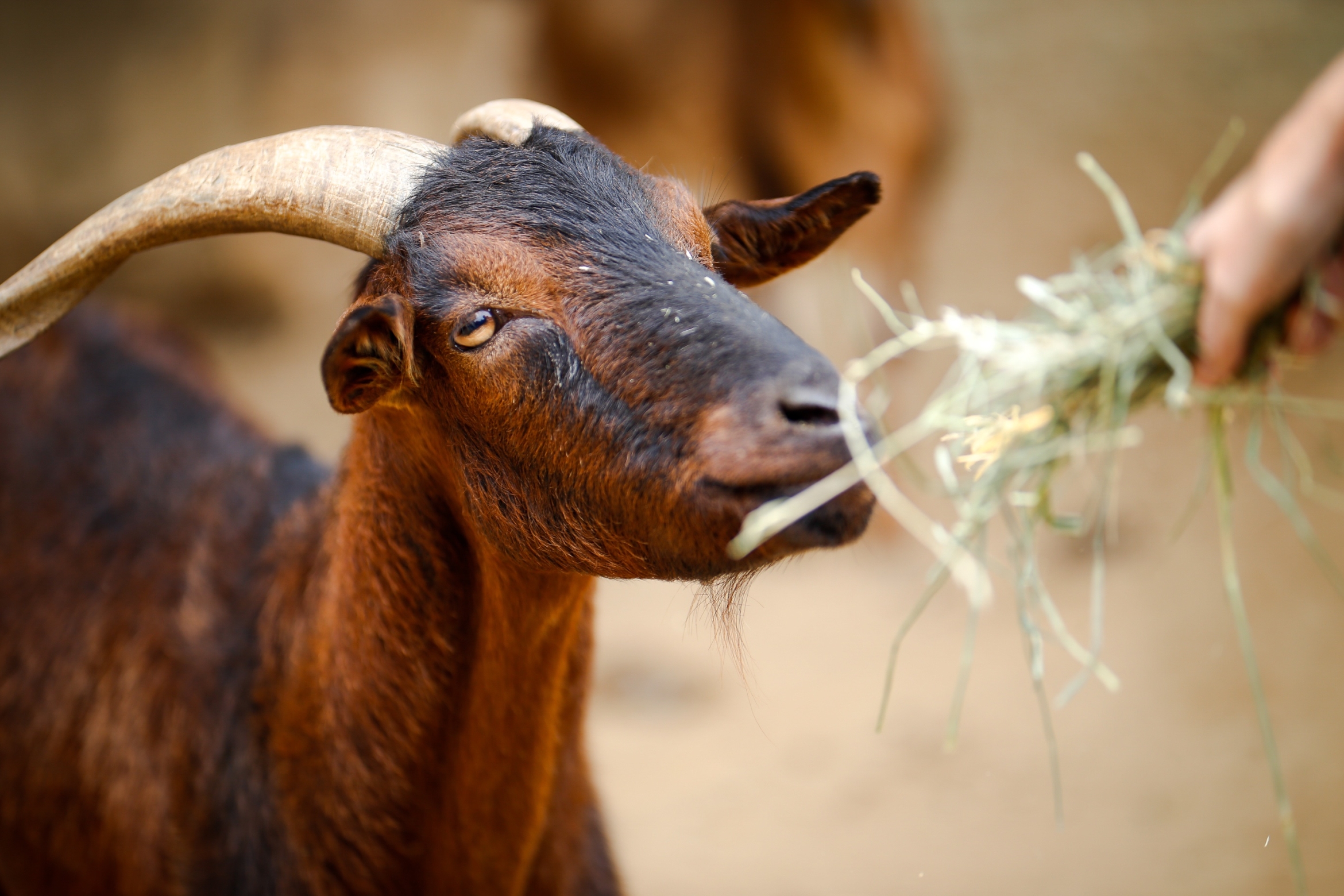
Researchers prove that tough, woody lignin can be broken down in an anaerobic environment
It’s a tough job, but someone’s got to do it. In this case, the “job” is the breakdown of lignin, the structural biopolymer that gives stems, bark and branches their signature woodiness. One of the most abundant terrestrial polymers on Earth, lignin surrounds valuable plant fibers and other molecules that could be converted into biofuels and other commodity chemicals — if we could only get past that rigid plant cell wall.
Fortunately, the rather laborious process already occurs in the guts of large herbivores through the actions of anaerobic microbes that cows, goats and sheep rely on to release the nutrients trapped behind the biopolymer. In a paper published in the journal Nature Microbiology, researchers in UC Santa Barbara chemical engineering and biological engineering professor Michelle O’Malley’s lab prove that a group of anaerobic fungi — Neocallimastigomycetes — are up to the task. They conducted this work in collaboration with colleagues at the U.S. Department of Energy (DOE) Joint Genome Institute, Lawrence Berkeley National Laboratory, Joint BioEnergy Institute and Great Lakes Bioenergy Research Center.
“You can think of lignin as kind of a skeletal system for plants,” said O’Malley, whose research focuses on finding and accessing alternate sources of energy and chemicals from what would otherwise be considered plant waste. Additionally, she said, lignin has properties that make the plant resistant to physical degradation by enzymes and pathogens. “Lignin is really important — it provides that hardiness and structure, but it’s equally difficult to break down for the exact same reason.”
For decades it was thought that lignin could be degraded only in the presence of oxygen. “It takes time, and depends on certain chemical species — such as free radicals — that to the best of everyone’s knowledge could only be made with the help of oxygen,” O’Malley explained.
However, there have been hints all along that nature has more than one way of stripping away the lignin. In the industrial biomass world, to access the cellulose and hemicellulose behind the lignin, plant biomass typically has to undergo pre-treatment. But in the O’Malley Lab’s work with anaerobic microbes, pre-treatment has never been necessary.
“We’ve never had to extract the lignin out of there because the fungi we work with are just happy to extract the cellulose and hemicellulose on their own,” she said. “So the fact that these fungi could grow on non-pretreated plant biomass was always a feature that was unique and unusual, and we hypothesized that they must have a way of moving the lignin around.”
To find out for sure, the O’Malley lab conducted experiments with members of the Neocallimastigomycetes group. Tom Lankiewicz, the study’s lead author, cultivated some of these fungi on poplar, sorghum and switchgrass in an oxygen-free environment. These three types of biomass were chosen for the various ways lignin presents itself in nature, from the flexible stems and leaves of the grasses to the more rigid wood of poplar. In addition, these plants are being eyed by the DOE as potential feedstocks for biofuels and bio-based products.
The team tracked the progress of the fungi as they went to work on the tough fibers. The researchers found that indeed, Neocallimastix californiae did break down the plants’ rigid cell walls. Using advanced imaging techniques such as nuclear magnetic resonance, they could identify specific lignin bond breakages in the absence of oxygen.
“This is really a paradigm shift in terms of how people think about the fate of lignin in the absence of oxygen,” O’Malley said. “You could extend this to understand what happens to lignin in a compost pile, in an anaerobic digester, or in very deep environments where no oxygen is available. It pushes our understanding of what happens to biomass in these environments and alters our perception of what’s possible and the chemistry of what’s happening there.”
While this research proves that lignin can be broken down by fungi in oxygen-free environments, the next challenge for the researchers is to find out exactly how. Are there enzymes mediating this process? Is this a feature of anaerobes in general? Like with any intriguing research, each answer leads to more questions — questions that invite more research and fruitful collaborations.
“This, of course, is not just a single lab effort,” O’Malley said. “It was made possible only because we’ve had so many collaborators that bring to the table their different kinds of expertise.”
Sonia Fernandez
Senior Science Writer
sonia.fernandez@ucsb.edu




